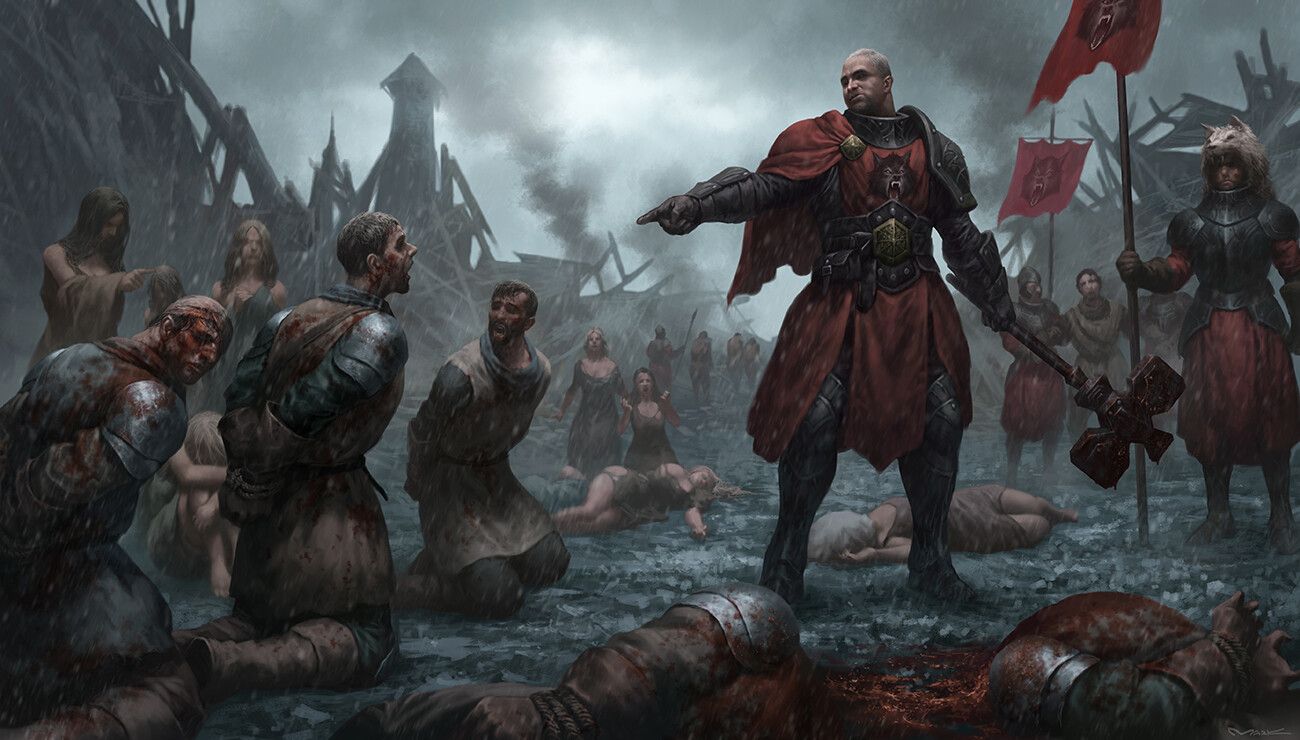Leader
Leaders are levelled individuals, typically at 1st or 2nd level, most commonly fighters, who hold command over a clan or serve as subordinates within a tribal structure. In primitive societies, leaders rise through proven skill in combat and the accumulation of experience over time; within more civilised cultures, leadership is gained through formal training and structured advancement. Any 1st level fighter, paladin or ranger who possesses knowledge in leadership may be considered for a formal post overseeing soldiers during wartime, or for a standing position within a town guard or the regular ranks of a watch.
Qualities
Except on a clan-level, leaders possess limited autonomy in making personal decisions. Within larger groups, leaders are tasked with the direct management of non-levelled individuals or established ranks, serving primarily as relays for the directives issued by sub-chiefs and chieftains. These higher-ranking figures engage directly with the ruling class or the governing political structure. A leader may have no greater understanding of the objectives being conveyed than the soldiers under their command, but effective leaders are distinguished by their capacity to carry out instructions without hesitation or complaint, even when those orders entail significant personal risk or hardship.
Leaders are frequently chosen based on social standing, a strong sense of personal responsibility, technical competence or natural charisma. None of these traits are strictly required, but each increases a leader's ability to function effectively within a hierarchical organisation. While not all levelled individuals are suited to leadership, any character class has the potential to yield a leader, provided the character has pursued one of the studies within the leadership field.
Sage Abilities
Depending on the study they understand, leaders will have one of four groups of sage abilities, all of amateur status:
- Heroism. forfeit self, presence, rash action.
- Judgment. fine leader, recognise characteristics I, recruit
- Logistics. bargaining, butchering, dowse for water, foraging, herding, steadfast, teamstering, tinkering
- Motivation. improve morale, inspire loyalty
Character Generation
When generating the ability stats for a leader non-player character, roll 4d6 (discarding the lowest die) twice and roll 3d6 four times. Once all six rolls are complete, arrange the resulting numbers from highest to lowest in the following order: primary attribute, strength, constitution, charisma, intelligence, dexterity, wisdom. After this assignment, apply a +1 bonus to both intelligence and wisdom. When rolling for hit points, any result of "1" or "2" should be re-rolled to reflect the hardened nature expected of such individuals.
The character's age should be determined normally, with an additional 2d4 years added to the result. In approximately one in eight cases, the character will instead be 2d8+7 years older than the norm. For instance, a typical 1st level human fighter would begin at an age of 14 plus 1–4 years. In most cases, this would be raised by an additional 2–8 years, and in rarer cases, by 9–24 years.
These guidelines are intended to support character generation and consistency, but may be adjusted at the DM's discretion as fits the needs of the game.
See The Adventure
